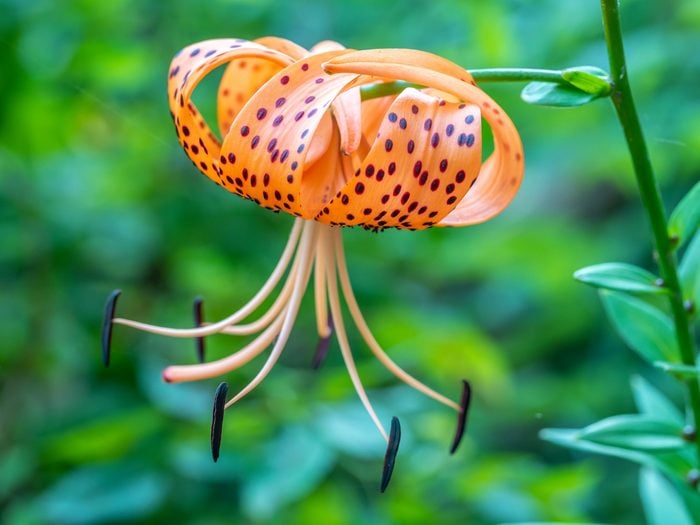
Columbia Lily
Lilium columbianum, Zones 5 to 9
Native to western North America, Columbia lily is named for its bright orange flowers spotted with maroon. The nodding blossoms with curved petals offer nectar to all sorts of pollinators. This is a great hummingbird plant for shade.
Why we love it: With a potential height of 3 to 6 feet, large bright flowers and a bloom period lasting for months, this wildflower is a showstopper.
Check out the top 10 beautiful lily flowers to love.
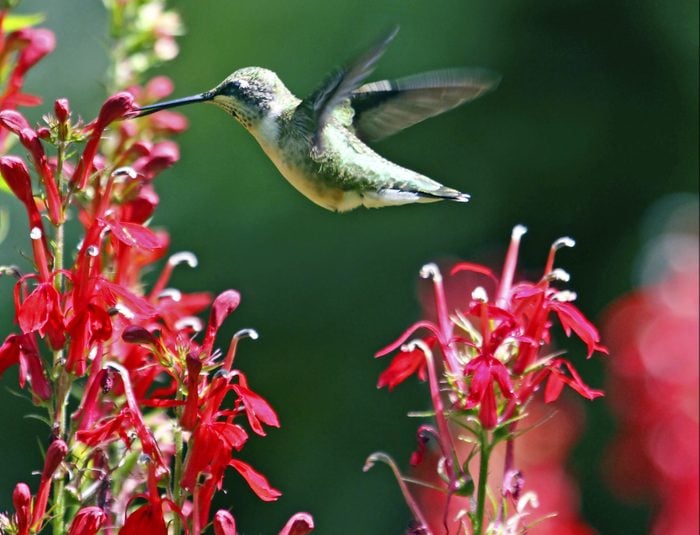
Cardinal Flower
Lobelia cardinalis, Zones 3 to 9
The blooms of this North American native plant have five petals that come together to form a tube. The shape baffles some insects, so the cardinal flower relies on hummingbirds for pollination. Give this plant the consistent moisture it enjoys in its natural habitats: swamps, streambanks and other damp, semi-shaded areas.
Why we love it: Blooms in the richest shade of scarlet prove you can have vivid color even in the shadiest corners of a landscape.
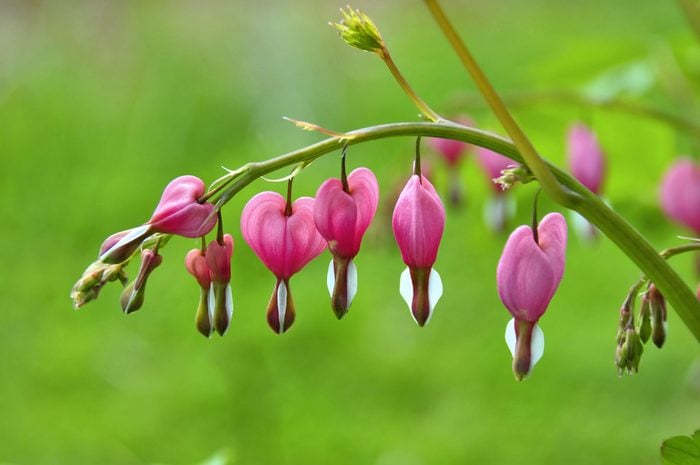
Bleeding Heart
Lamprocapnos spectabilis, Zones 3 to 9
Send a special valentine to the hummingbirds in shade with these heart-shaped flowers. They are a classic companion to ferns and hostas in a shade garden, and they thrive in the same cool, moist conditions. Blooms and leaves fade by summer, so cut bleeding heart plants back to encourage new foliage.
Why we love it: The darling flowers put on a longer display than most early spring bloomers, and the easy-to-grow plants are long-lived, too.
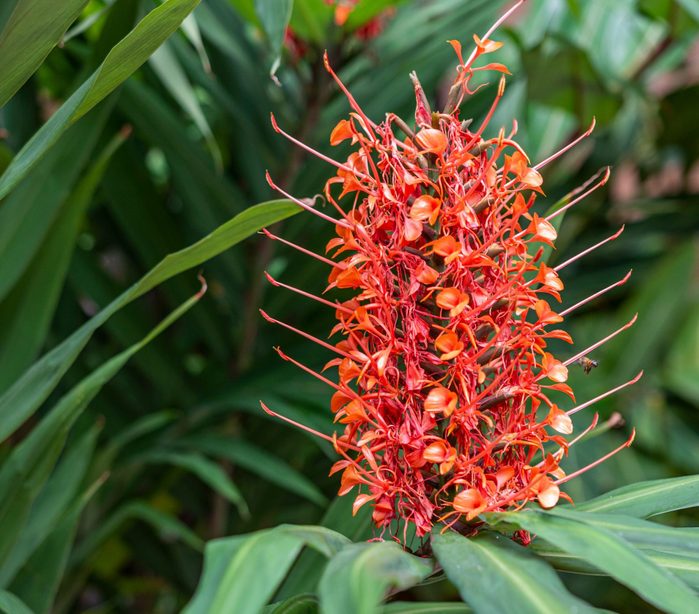
Ginger Lily
Hedychium spp., Zones 8 to 11
Ginger lilies offer showy tropical foliage through summer, followed by richly fragrant flowers in late fall. They take to moist, rich soil and are generally hardy only in Zones 8 to 11, but can be overwintered indoors and replanted in spring just like dahlias in cold areas (psst—here’s how to overwinter non-hardy bulbs and tropical plants).
Why we love it: That heavenly fragrance! Growers in the South specialize in various types of ginger lilies that come in all colors, including white, yellow and salmon.
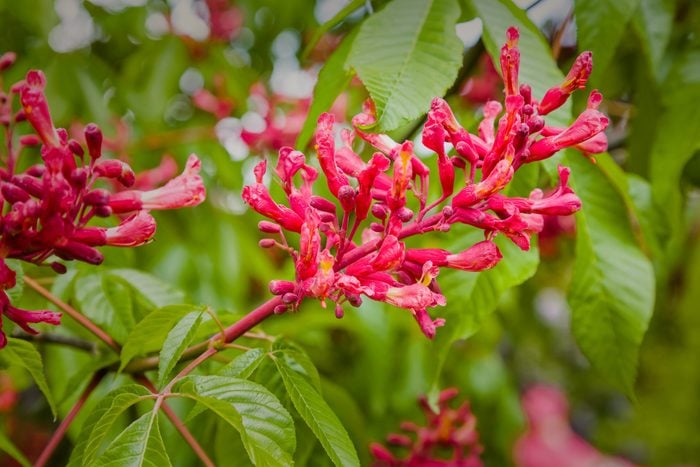
Red Buckeye
Aesculus pavia, Zones 4 to 8
Spot this shrub in the woods and you’ll be delightfully surprised by its large clusters of red blooms. It forms a long taproot to compete for moisture in the understory, so plant it when it is young.
Why we love it: The showy woodland shrub challenges assumptions about what hummingbird plants in shade can be.
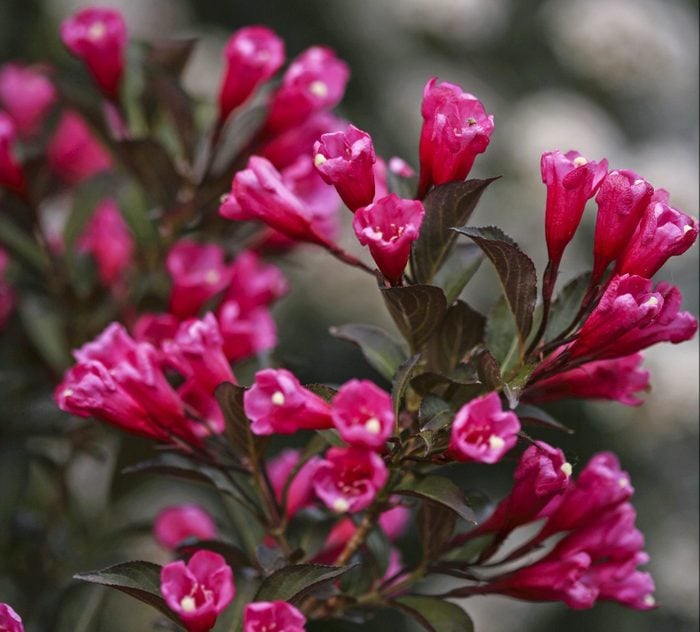
Weigela
Weigela spp., Zones 4 to 9
Hummingbirds are sure to spot this alluring spring-flowering shrub. Use weigela to fill the transition from taller trees to lower perennials. Extend its interest in the garden with reblooming varieties and those with colorful foliage—Strobe is a variety that offers both.
Why we love it: Early blooms offer a food source to hungry pollinators. Look for new cultivars that may produce blooms through summer.
Don’t forget about these other shrubs with pink flowers.
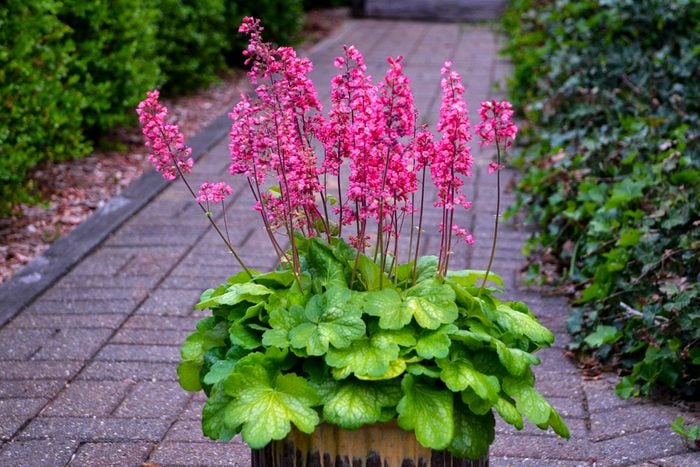
Coral Bells
Heuchera spp., Zones 3 to 9
Many of the newer coral bells offer fabulous foliage to jazz up a shady site, but don’t overlook the draw of the dainty flowers. Plant where they can enjoy good drainage (including containers and rock gardens). In humid areas, try hybrids with H. villosa parentage.
Why we love it: Each bell-shaped blossom may be small, but in clusters atop wiry, arching stems, they hold big appeal to hummingbirds in shade.
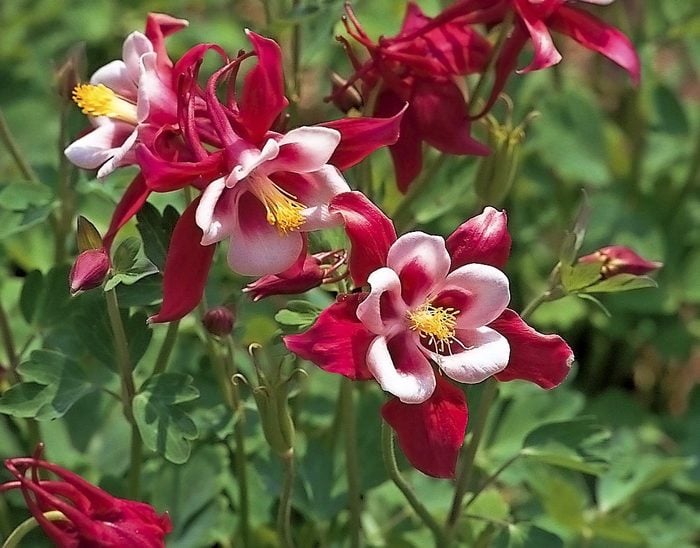
Columbine
Aquilegia spp., Zones 3 to 8
Eastern and western native species of columbine, along with many other hybrids, attract hummingbirds to their bell-like flowers resembling crowns. The sweet nectar inside each tube-shaped spur rewards the fliers for visiting.
Why we love it: Stems up to 2 feet tall hold the flowers high enough to make an impact. Native columbine reseeds to create a colony of flowering plants for you to adore or share with others.
Discover the top 15 colorful flowers hummingbirds love.
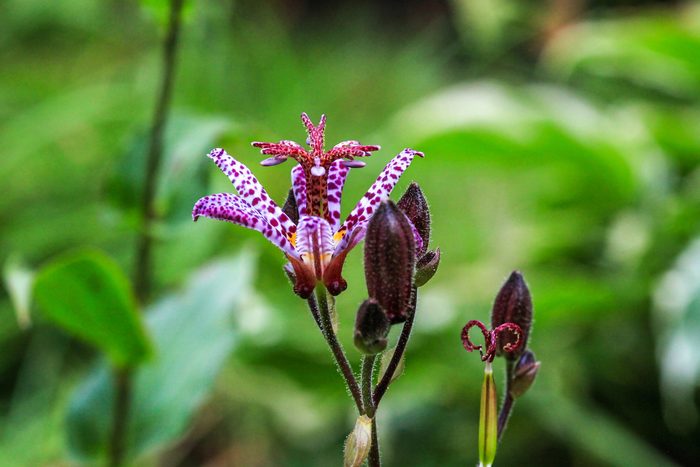
Toad Lily
Tricyrtis spp., Zones 4 to 9
Related to lilies but resembling orchids, shade-loving toad lily is lovelier than its name, with speckled purple flowers on arching stems. Blooms appear in fall, far later in the season than many woodland flowering plants. You may also find this perennial to be deer resistant.
Why we love it: Fantastical flowers invite you to linger in awe.
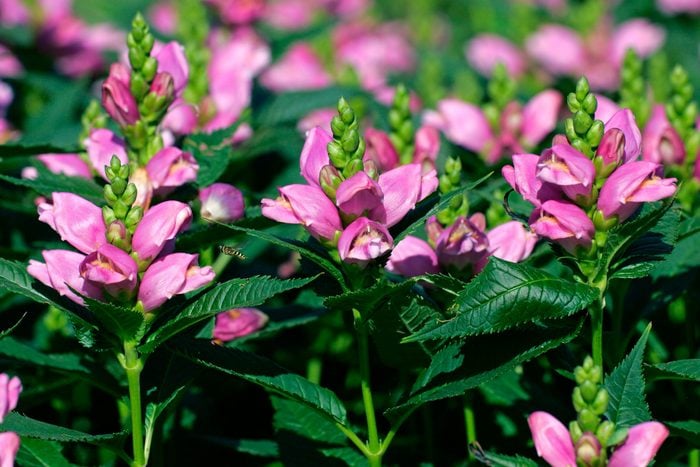
Turtlehead
Chelone spp., Zones 3 to 9
The funny name is also an apt description of the flowers, which are held on spikes and resemble snapdragons. Available in shades of pink, red and white, be sure to look for Hot Lips, a hot pink bloomer.
Why we love it: It provides color in a tough spot and time: boggy areas in late summer. Plus, it’s a pollinator magnet.